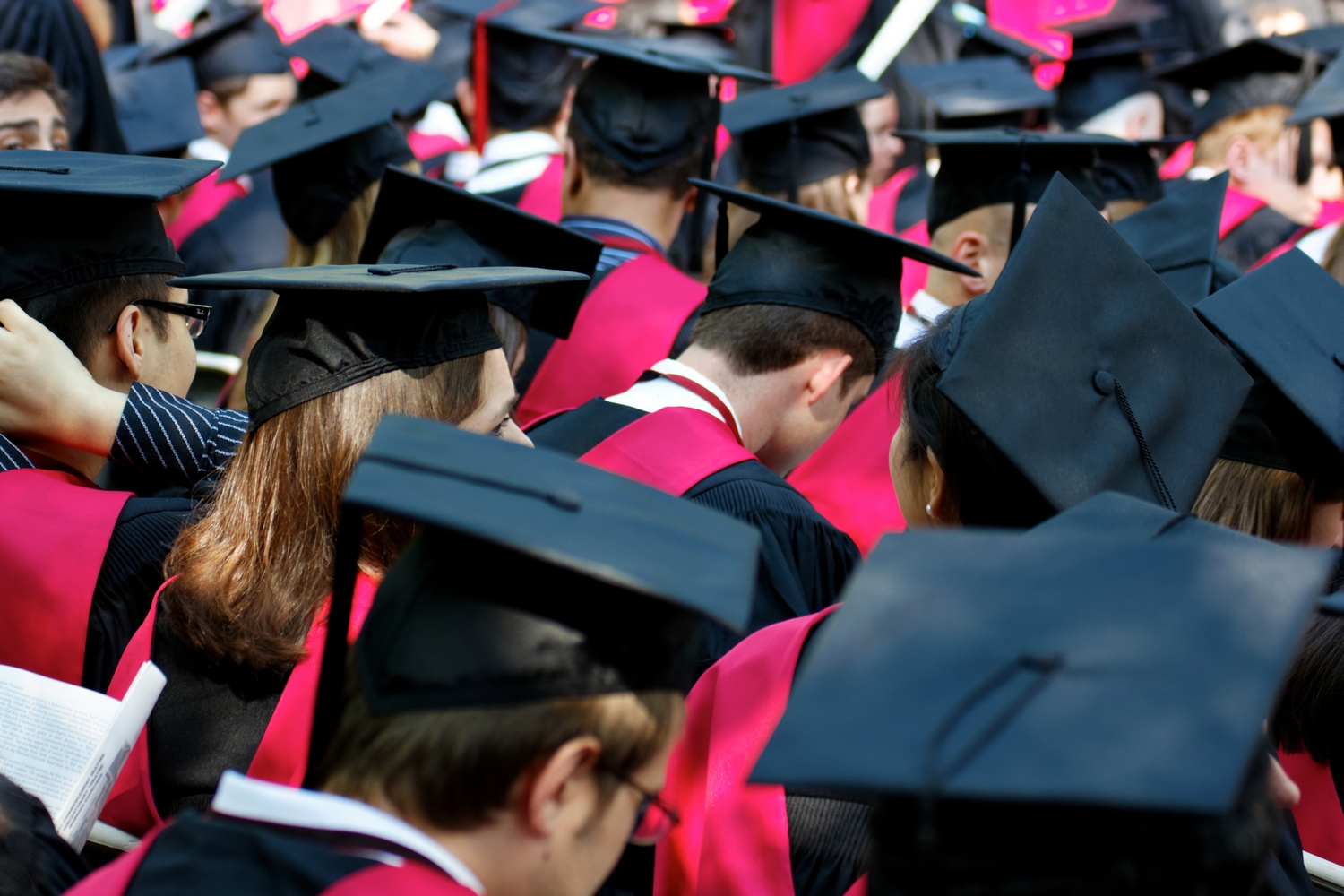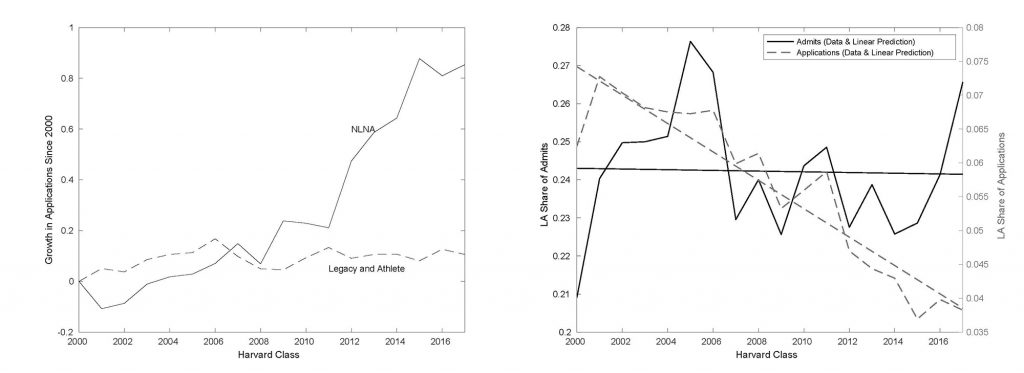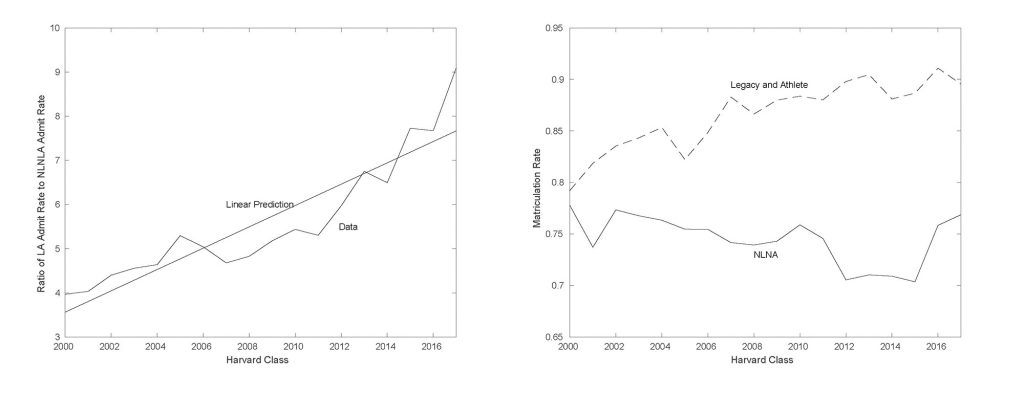The admissions advantages of privileged applicants have gone up over time at Harvard University. Privileged applicants currently make up 43% of white admits at Harvard, but less than 16% of admits of other ethnicities.
Competition for slots at elite universities in the United States has become increasingly fierce, with admit rates below 6% for schools like Harvard University, Princeton University, Yale University, and Duke University. Records made public in the Students for Fair Admissions, Inc v. Harvard University lawsuit revealed how one elite university makes admissions decisions, which, up until now, remained a closely guarded secret.
Elite universities offer legal advantages to those who come from higher socioeconomic backgrounds. These include advantages to legacies (i.e. children of alumni), relatives of donors, and children of faculty. Admissions advantages for athletes may also benefit those who come from higher socioeconomic backgrounds (depending on the sport).
In two IZA discussion papers, Peter Arcidiacono, Josh Kinsler, and Tyler Ransom investigate what has been happening to legacy and athlete admissions over time at Harvard University. They also quantify the extent of admissions advantages for recruited athletes, legacies, relatives of donors, and children of faculty (ALDC) relative to their non-ALDC peers.
In “Divergent: The Time Path of Legacy and Athlete Admissions at Harvard,” the authors show that, over an 18-year period, applications for legacies and athletes (LA) have remained constant, while applications for non-legacy non-athletes (NLNA) have skyrocketed. At the same time, the share of admitted students who are legacies or athletes has remained roughly constant at just under 25% of the admitted class.
In fact, admissions advantage for legacies and athletes (relative to non-legacy, non-athlete applicants) has increased from four times higher to nine times higher over the 18-year period. Moreover, the matriculation rate for legacies and athletes has increased from 80% to 90%, suggesting that their academic strength has declined. (Matriculation rate is the likelihood that an admitted student will enroll at the university; a lower matriculation rate for a group of students indicates that they have better options of where to enroll than those with higher matriculation rates.)
The authors then show that, if the admissions advantage for legacies and athletes were held fixed, Harvard would have enrolled a more ethnically diverse student body.
In “Legacy and Athlete Preferences at Harvard,” the authors describe in detail Harvard’s admissions process and examine the frequency of ALDCs by race, as well how much more or less academically qualified ALDC applicants and admits are relative to non-ALDC applicants and admits.
Following so-called “holistic” or whole-person admissions practices employed at many elite, private universities in the United States, Harvard admits students based on academics, as well as extracurricular experiences, athletic prospects, personal qualities, recommendations from secondary school teachers and administrators, and an in-person interview with a Harvard alum.
Among admitted Harvard students who are white, 43% are ALDC, compared to less than 16% of admitted non-white students. Legacies are the largest group of special applicants, followed by recruited athletes and relatives of donors. Children of faculty make up a very small fraction of special applicants.
The authors compute that nearly three out of four admitted ALDCs who are white would not be admitted if they were treated the same as their non-ALDC peers. The authors also show (similar to the above-mentioned findings) that the racial composition of the admitted class would be more diverse if Harvard abandoned admissions advantages for legacies and athletes.
Holistic admissions practices have come under increased scrutiny in the United States. The authors show that Harvard’s holistic admissions work to make the racial distribution of admitted students look more like the racial distribution of the United States. However, within racial groups, holistic admissions may lead to more inequality, depending on which non-academic characteristics universities value.


